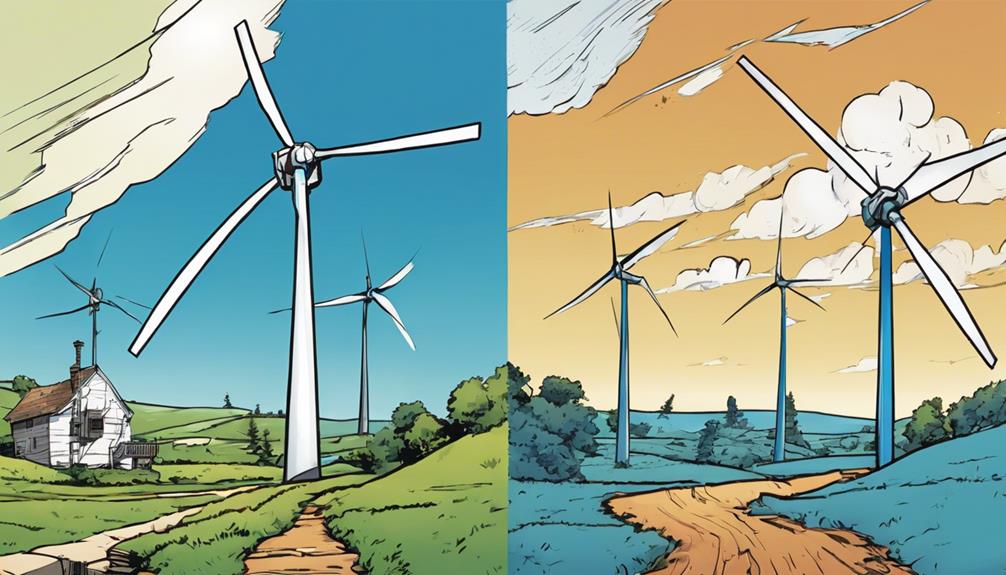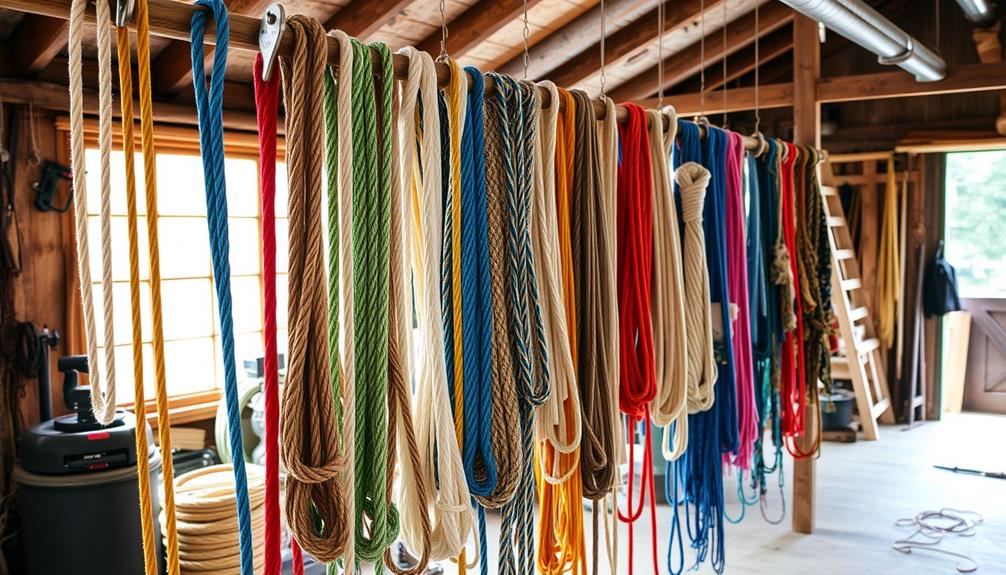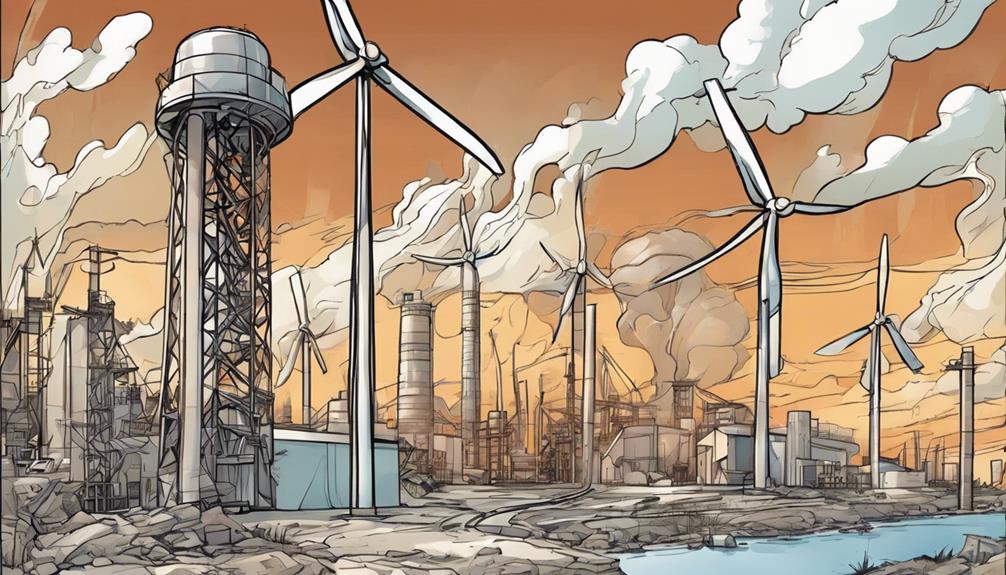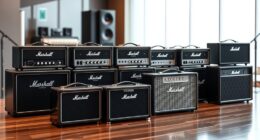Blade twist is a critical design element that greatly enhances the performance and reliability of wind turbines. By twisting the blades, wind turbines can maintain structural integrity, optimize aerodynamic efficiency, and minimize turbulence effects. This innovative design approach also enables turbines to adapt to wind speed variations, capturing more energy and maintaining consistent power output. In addition, advancements in materials and AI-driven enhancement are pushing the boundaries of wind turbine performance. As the industry continues to evolve, the importance of blade twist in revealing new levels of efficiency and power output will only continue to grow.
Key Takeaways
- Twisted blade design maintains structural integrity, minimizing risk of fatigue and failure, and enabling absorption of wind-induced stresses.
- Varying angle of attack along the blade length optimizes lift distribution, reducing drag and enhancing overall aerodynamic efficiency.
- Twisted blades minimize turbulence effects, capturing more wind energy and maintaining consistent power output, directly impacting overall efficiency.
- Blade twist adapts to wind speed variations, ensuring maximum energy capture and consistent power output, with real-time adjustments possible.
- Innovative approaches to blade twist design, leveraging advancements in materials and AI-driven enhancement, push boundaries of wind turbine performance.
Twisting for Structural Integrity
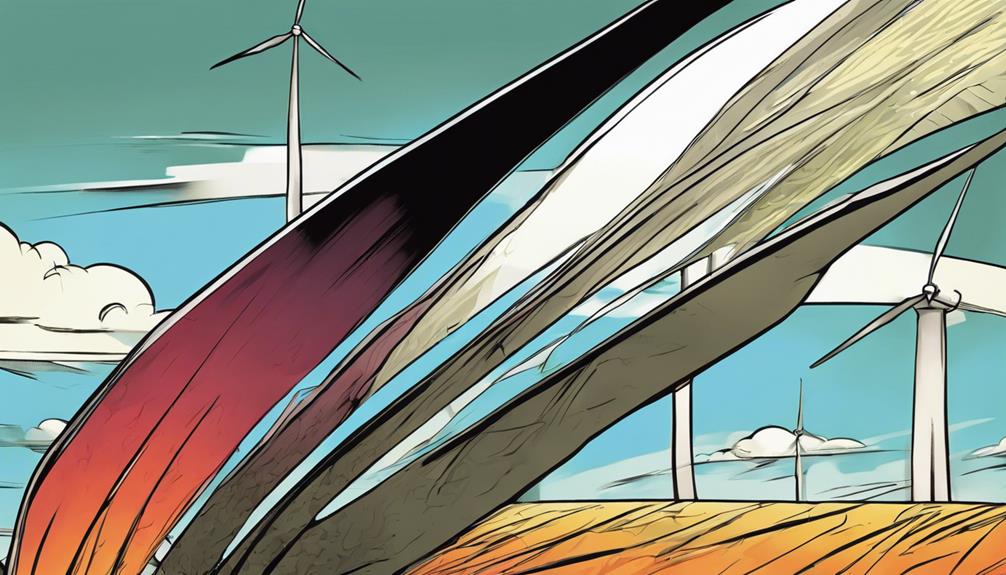
The twisted blade design plays an essential role in maintaining the structural integrity of wind turbines by allowing the blade to flex and adapt to varying wind loads, thereby reducing the risk of fatigue and failure.
This adaptability is crucial in enduring the harsh conditions encountered during turbine operation. The twist enables the blade to absorb and distribute wind-induced stresses more effectively, minimizing the likelihood of cracking or breaking.
Optimizing Aerodynamic Efficiency
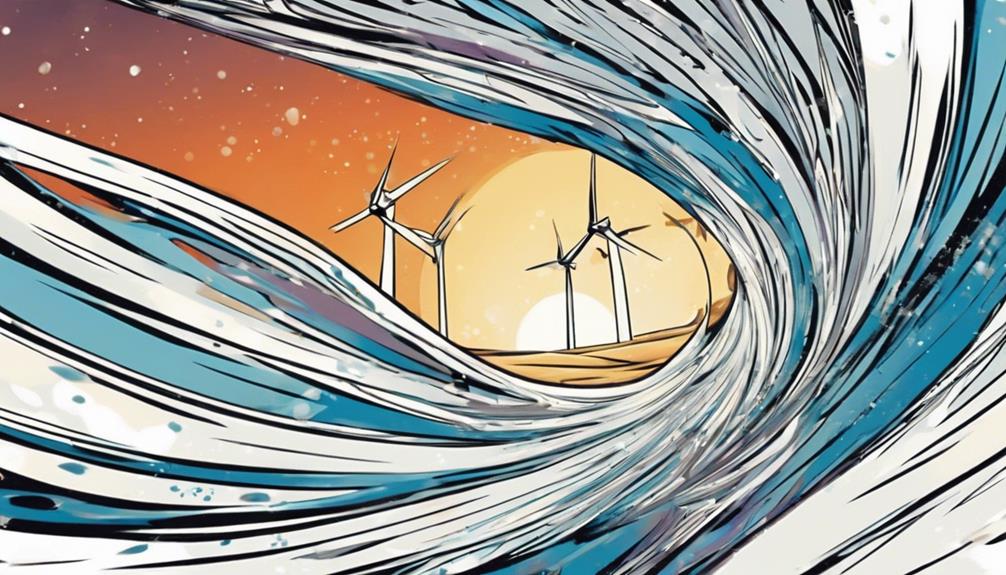
By strategically varying the angle of attack along the blade length, twisted blades minimize drag and optimize lift distribution, thereby greatly enhancing overall aerodynamic efficiency.
This careful design guarantees a gradual increase in the angle of attack, reducing drag and promoting a smooth flow of air over the blade.
As a result, twisted blades achieve a more uniform lift distribution across the blade length, maximizing aerodynamic efficiency.
This optimized lift distribution enables wind turbines to harness energy more effectively, leading to increased power output and improved performance.
Minimizing Turbulence Effects
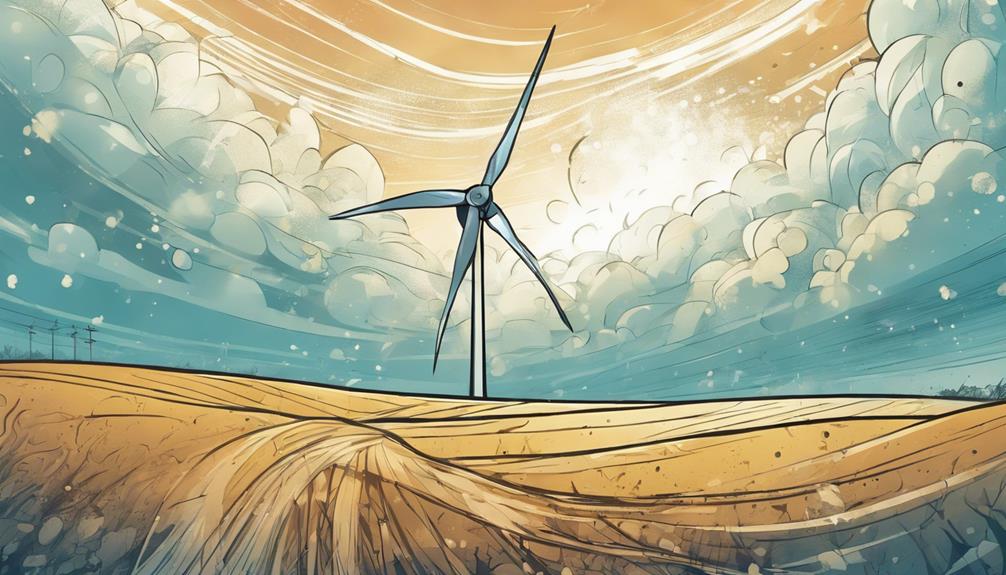
Turbulence reduction is another key benefit of twisted blades, as they optimize wind energy production by minimizing turbulence effects and redistributing forces along the blade length.
This innovative design feature notably reduces turbulence compared to straight blades, leading to improved performance and efficiency. By twisting the blade, the aerodynamic forces are redistributed, reducing the impact of turbulence on the turbine's operation.
As a result, twisted blades can capture more wind energy and maintain a consistent power output, even in varying wind conditions. This design advancement has a direct impact on the overall efficiency of the wind turbine, making it an essential element in the pursuit of maximizing renewable energy production.
Adapting to Wind Speed Variations
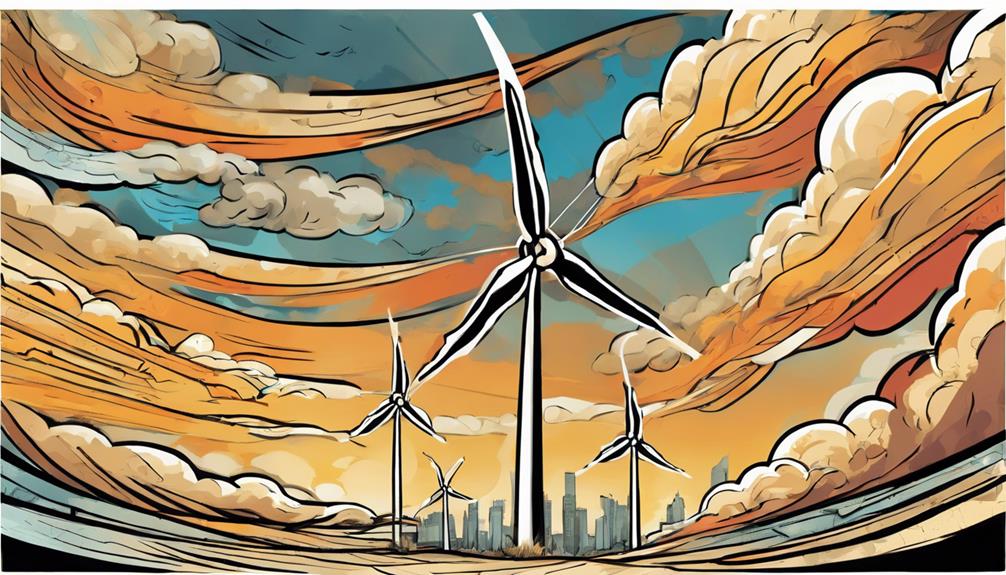
As wind speeds fluctuate, the blade twist must adapt to guarantee maximum energy capture and consistent power output. The dynamic nature of wind requires a responsive blade design that can adjust to changing conditions.
A well-designed twisted blade ensures that the turbine can harness energy efficiently across a broad range of wind speeds.
Blade twist increases with higher wind speeds to optimize performance and capture maximum energy.
Adjusting twist along the blade length maintains consistent power output and evenly distributes aerodynamic forces.
Variable twist blade technology allows for real-time adjustments to wind speed changes.
Predictive algorithms and AI can optimize blade twist for expected wind patterns.
Adaptive blade twist enables turbines to operate efficiently in varied environmental conditions.
Enhancing Performance Through Innovation
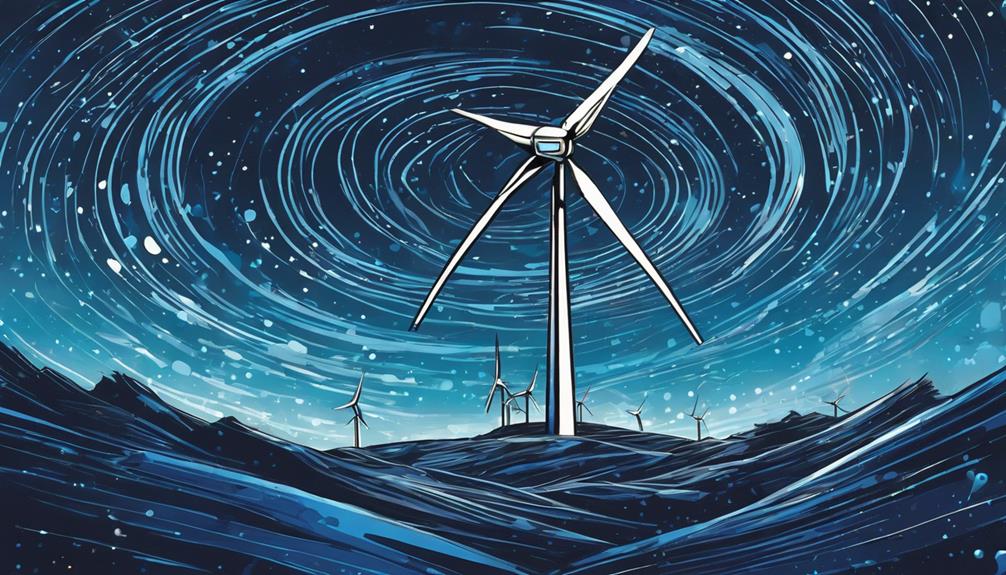
Innovative approaches to blade twist design are pushing the boundaries of wind turbine performance. Leveraging advancements in materials, AI-driven enhancement, and real-time monitoring are enabling access to new levels of efficiency and power output.
Variable twist blade technology enables turbines to adapt to changing wind conditions in real-time. This maximizes energy capture and reduces fatigue loads. AI algorithms can predict prime twist configurations based on weather forecasts and turbine performance data. This allows for predictive adjustments that minimize energy losses.
These innovations have the potential to greatly enhance turbine efficiency, reduce maintenance costs, and increase power output. Ultimately, they are propelling the wind energy industry towards a more sustainable future.
Frequently Asked Questions
How Does Blade Twist Affect the Overall Weight of a Wind Turbine?
Blade twist has a minimal impact on the overall weight of a wind turbine, as the structural integrity is maintained through optimized material distribution, allowing for efficient energy capture without significant weight increases.
Can Twisted Blades Be Used for Both Onshore and Offshore Wind Farms?
Yes, twisted blades can be utilized for both onshore and offshore wind farms, as they provide aerodynamic efficiency and structural integrity, regardless of the installation location, to optimize wind energy production.
What Is the Ideal Twist Angle for Maximum Energy Capture?
Like a master painter, the ideal twist angle for maximum energy capture is a delicate balance, ranging from 10° to 20°, depending on wind speeds and turbine design, to optimize aerodynamic efficiency and power output.
How Does Blade Twist Impact the Noise Level of a Wind Turbine?
Blade twist greatly reduces noise levels by minimizing turbulence and optimizing aerodynamic efficiency, resulting in a quieter operation. The twisted design guarantees a smoother airflow, decreasing vibrations and noise emissions.
Can Twisted Blades Be Retrofitted to Existing Wind Turbines?
Yes, twisted blades can be retrofitted to existing wind turbines, offering a cost-effective upgrade to enhance performance and efficiency, although compatibility and structural integrity assessments are essential to guarantee a successful retrofitting process.
How Does Blade Twist Contribute to Boosting Wind Turbine Performance?
Blade twist is crucial to boost wind turbine torque. By varying the angle of attack along the length of the blade, it can efficiently capture wind energy at different wind speeds. This twist allows for better control over the turbine’s power output, ultimately maximizing performance and energy production.
Conclusion
As the winds of change sweep across the renewable energy landscape, the subtle yet significant art of blade twist emerges as a beacon of innovation, illuminating the path to enhanced wind turbine performance.
By mastering the nuances of twist, engineers can reveal the full potential of wind energy, much like a conductor orchestrating a symphony of airflow, harmonizing the intricate dance of aerodynamics and structural integrity.

